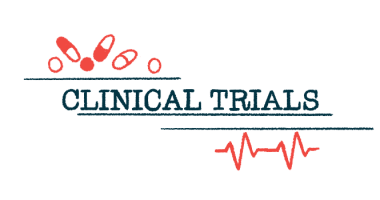SHP616 for hereditary angioedema
Last updated May 3, 2024, by Marisa Wexler, MS

What is SHP616 in hereditary angioedema?
SHP616 (TAK-616) was an investigational under-the-skin (subcutaneous) injection therapy that Shire, now part of Takeda, developed as a potential preventive treatment to reduce the risk of swelling attacks in people with hereditary angioedema (HAE). After testing the therapy in a Phase 3 clinical trial, Takeda discontinued SHP616’s program in 2019, citing the availability of its approved HAE therapy Takhzyro (lanadelumab), as well as “changes in the competitive environment.”
Therapy snapshot
| Treatment name: | SHP616 |
| Administration: | Subcutaneous injection |
| Clinical testing: | Discontinued after being tested in a Phase 3 trial |
How does SHP616 work in hereditary angioedema?
In the most common forms of HAE, types 1 and 2, patients carry mutations in the SERPING1 gene that provides instructions for making a protein called C1-inhibitor or C1-INH. This protein normally helps regulate the activity of a signaling molecule called bradykinin that’s known to promote blood vessel widening and permeability. However, in HAE, C1-INH is dysfunctional or its levels are too low. As a result, bradykinin is overproduced, ultimately leading to the attacks of swelling that characterize HAE.
SHP616 contains a working version of the C1-INH protein. By restoring the levels and activity of this protein, the therapy was designed to regulate bradykinin signaling and ultimately reduce the risk of swelling attacks.
How was SHP616 administered in hereditary angioedema?
In a Phase 3 clinical trial involving people with HAE, SHP616 was administered at a fixed dose of 2,000 international units, given as a single 4 mL subcutaneous injection every three to four days.
SHP616 in hereditary angioedema clinical trials
The safety and effectiveness of SHP616 as a prophylactic (preventive) treatment for HAE was evaluated in a Phase 3 clinical trial called SAHARA (NCT02584959). The study enrolled 75 HAE patients, 12 and older, who’d experienced at least two swelling attacks per month in the three consecutive months before entering the trial. Most participants were white and female, and nearly all had HAE type 1.
One in five (20%) patients were treated with SHP616 for the entire study, which lasted 28 weeks (about seven months). The rest were randomly assigned to receive SHP616 or a placebo for 14 weeks. Those initially given SHP616 switched to the placebo and vice versa for the next 14 weeks.
Results showed patients on SHP616 had significantly lower rates of swelling attacks compared with those on a placebo, regardless of treatment sequence. Specifically, from the beginning of the study, SHP616 led to a median reduction of 79.5% in the rates of HAE attacks compared with the placebo.
Additionally, more than three-quarters (77.6%) of patients experienced a reduction of at least 50% in the rates of swelling attacks while receiving SHP616 compared with the placebo. The proportion of patients who remained attack-free was also higher during treatment with SHP616 (37.5%) than with the placebo (8.8%).
More than 90% of participants reported being satisfied with the treatment’s subcutaneous route of administration.
Common side effects of SHP616
In the Phase 3 SAHARA trial, adverse events reported in patients given SHP616 included upper respiratory tract infection and headache, which were observed at similar rates in those given a placebo. No serious side effects were reported.
Injection site reactions were common with SHP616 and were reported in more than half of the patients given the therapy. These reactions were generally mild, with the most common being skin redness.
Angioedema News is strictly a news and information website about the disease. It does not provide medical advice, diagnosis, or treatment. This content is not intended to be a substitute for professional medical advice, diagnosis, or treatment. Always seek the advice of your physician or other qualified health provider with any questions you may have regarding a medical condition. Never disregard professional medical advice or delay in seeking it because of something you have read on this website.
Recent Posts
- DPP4 inhibitors for type 2 diabetes found not to raise angioedema risk
- FDA OKs sebetralstat, now Ekterly, as oral on-demand HAE therapy
- ACE inhibitor deemed cause of woman’s intestinal angioedema
- Pendopharm, Kalvista to bring sebetralstat for HAE to Canada
- Voices for change in a village of rare disease advocates, part 3
Related articles






